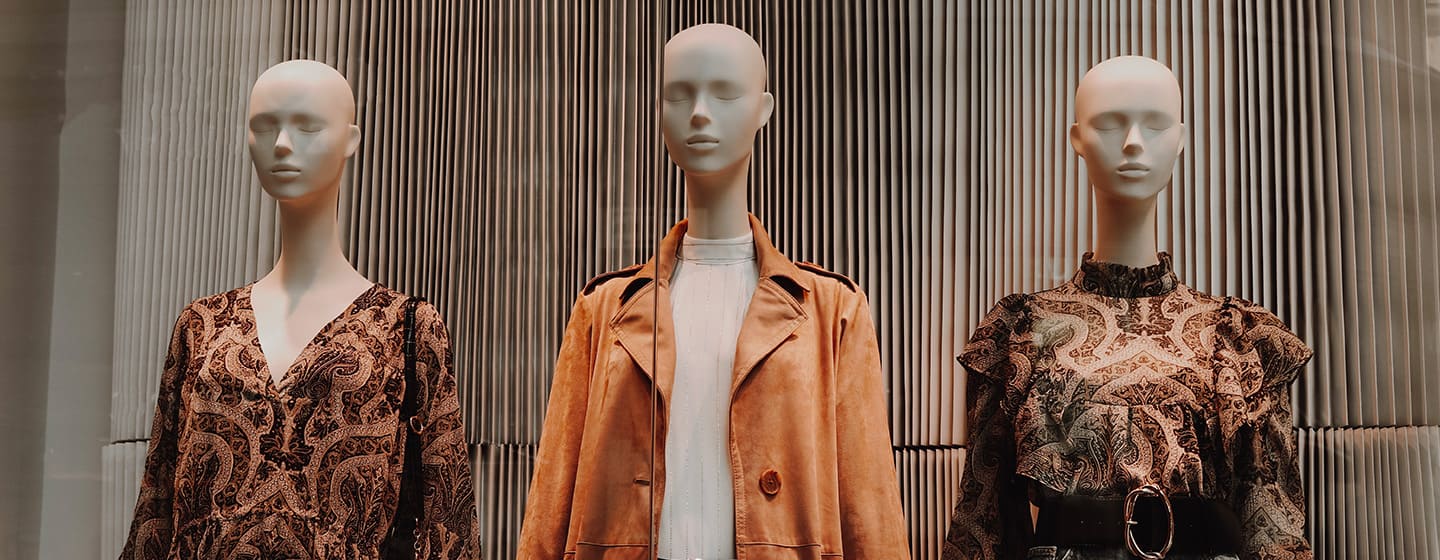
What a Visual Merchandiser Does and How to Become One
What a Visual Merchandiser Does and How to Become One
From window dresser to visual display specialist: the key creative role of Visual Merchandisers in big brands’ visual storytelling.
What Does a Visual Merchandiser Do?
Visual Merchandisers present, arrange and display items in stores and shop windows, that is, in crucial places where customers get to see, pick and buy products.
The role came about back in the 19th century, but has grown only recently, becoming essential in the fashion industry. Taking care of a store’s image means knowing how to give apparel and items a clean, organised finish, while respecting the brand’s identity through an accurate mix of elements: visual communication, aesthetics, sales analysis, as well as the planning of sales and promotional activities.
From Window Dresser to Visual Merchandiser
Historically, window dressers made their first appearance with the success of department stores in big American cities in the second half of the 19th century.
Department stores would reveal the first actual window displays and create the first Visual display techniques, based on the arrangement of apparel and items in domestic or cultural contexts.
In the 1930s, large shop windows became inspirational metropolitan screens, flirting with the world of cinema and the star system through hints and references.
Practical skills and intellectual knowledge were refined over the decades, and the traditional window dresser gradually turned into a modern Visual Merchandiser.
It is a job that requires a combination of skills; it is no coincidence that some of the world’s most celebrated fashion designers have started their career working as Visual Merchandisers.
A young Giorgio Armani made his first experience in the fashion industry working as a window dresser at Milanese department store La Rinascente. In the same years, Ralph Lauren would work as a sales assistant at Brooks Brothers in New York City, arranging items with the same meticulous attention to detail that he would later put into the design of his own stores around the world.
The Key Skills of a Visual Merchandiser
A visual merchandiser needs a solid technical basis (color theory, lighting technology), visual culture and artistic flair, but also some knowledge of marketing and psychology.
A good store display should engage as many senses as possible, and not only sight. Direct contact with clothes and fabrics, scents and aromas, and the music choices used to enhance the retail experience should all be consistent with the brand, with the type of store and its target audience. Yet a decisive skill is the ability to investigate customer behaviour: every Visual Merchandiser observes and monitors customers through specific behaviour and performance indicators.
How to Become a Visual Merchandiser – Where you Need to Study
With such a dynamic and recent history, visual merchandising is usually covered by specialised schools and creative academies, capable of predicting the future of a role that is transforming shop windows into soundstages, filled with installations and performances.
The Three-Year Course in Visual Merchandising offered at Istituto Marangoni Milano is part of the school’s fashion styling programme. It starts with an in-depth analysis of the fashion retail market and all aspects related to a brand’s positioning on communication and sales channels.
While setting up window displays heralded Armani and Lauren’s talent for creating a personal style in fashion, there is no shortage of success stories in visual merchandising as a creative career of its own. This was the case of Peter Marino, a traditional architect with extraordinary talent and personality, who has succeeded in becoming the creative mind behind the unique shop windows of Chanel (18 place Vendôme), Louis Vuitton and Bulgari (the New York City 5th Avenue flagship store).
Fashion Styling and Visual Merchandising · Undergraduate Course The London School of Fashion